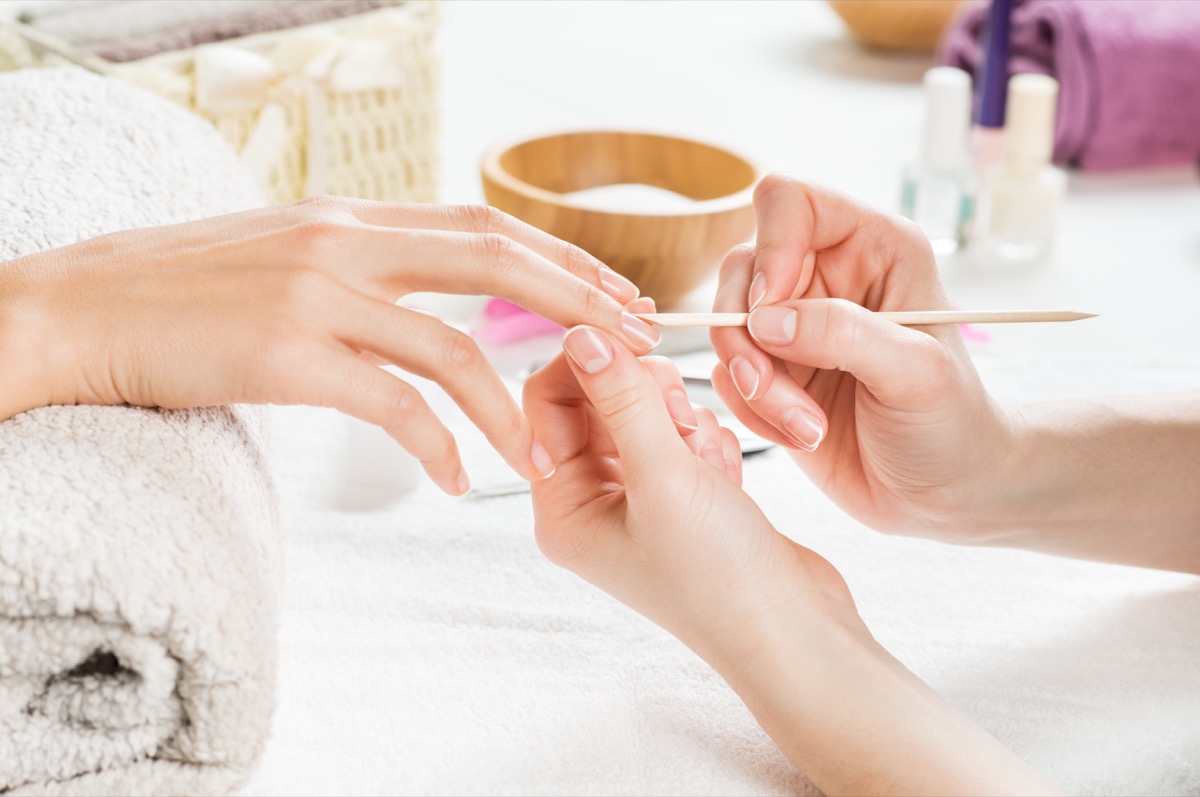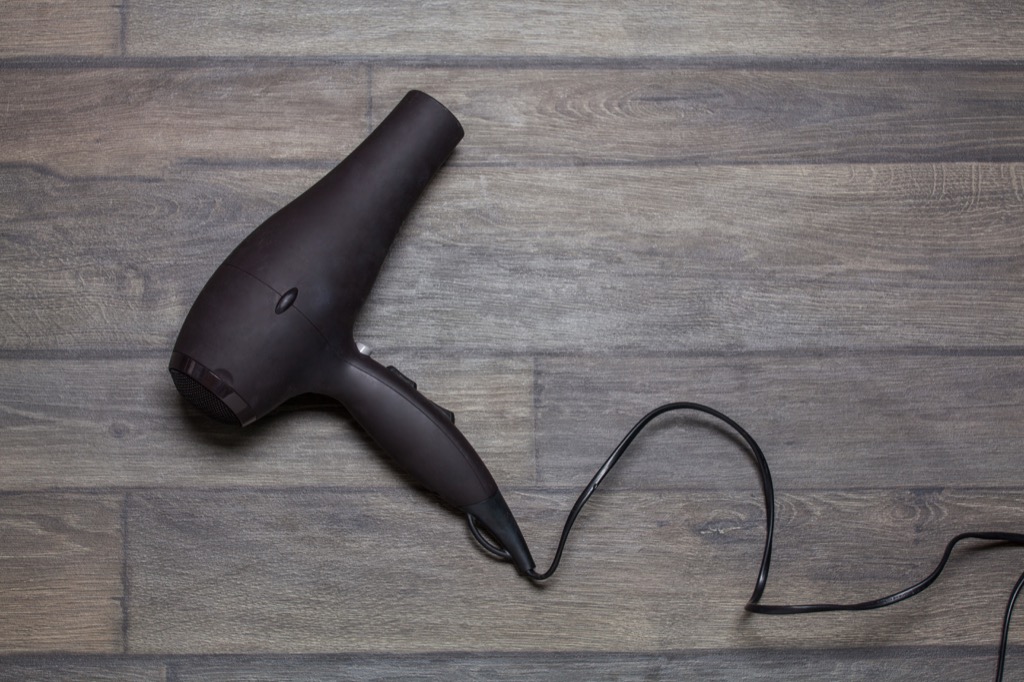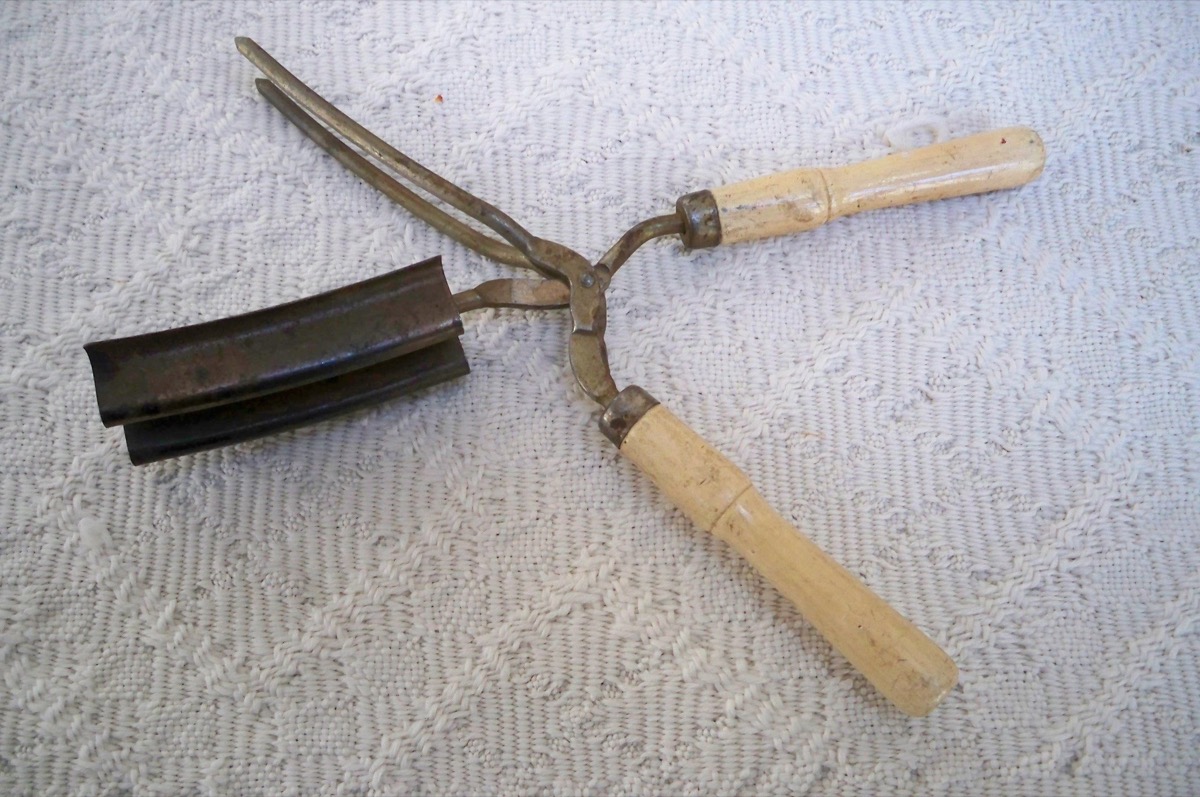Can You Guess What These Old Beauty Products Were Once Used For?

Long before we had hair straightening treatments, teeth whitening, and gel manicures, people had to get a bit more creative when it came to their beauty routines. Makeup application tools and hair styling devices that were considered major innovations decades ago are so antiquated by today’s standards that they’re unidentifiable to many modern consumers. With that said, it’s time to test your knowledge of the styling trends of yesteryear. Find out if you know what these 14 old beauty products were once used for.
What are these hair-raising devices?

Hint: You might’ve used them before getting ready for a big night out.
Answer: Curling irons

Long before virtually every home had electricity, people still managed to curl their hair, albeit via a more perilous process than the one we use today.
In the early 1900s, curling irons, like those metal ones, would typically be heated over a stove or fire before a person’s hair was wrapped around them to be curled.
What’s this bottle set?

Hint: Your current iteration is probably a pen.
Answer: Eyeliner

Before a wide variety of eyeliners were available at every drugstore and makeup counter, a kohl pot and brush combo was the preferred method of adding some drama to your eyes. The product was used all the way back in Ancient Egypt.
Unfortunately, in addition to the potential for eye irritation, kohl products frequently contained high levels of toxic lead. So if this old-school eyeliner was a part of your beauty routine, you could have been accidentally poisoning your body.
What’s this apparatus for?

Hint: You’d need a doctor to do this today.
Answer: A nose shaper

According to this advertisement from the early 20th century, this nose shaper “improves every unsightly nose shape.” It even came with a free brochure with guaranteed reports of success.
What’s this head-scratching machine?

Hint: Today, some chemicals and a professional can help you achieve the results promised by this device.
Answer: A perm machine

If you wanted to get your hair curly and full of volume back in the day, you might have had to spend a few hours attached to one of these machines, which were patented in the U.S. in 1928. A stylist would wrap their client’s hair around the machine’s rollers and heat the hair from the inside out, delivering a long-lasting curl.
What is this coiled contraption?

Hint: Its modern equivalent is a whole lot smoother.
Answer: An epilator

While epilators still exist today, just a few decades ago, they were much scarier-looking—and caused more pain to those who used them. Though most modern epilators have a rotating disc that extracts hair from a subject’s skin, older models, like this one, frequently used metal springs to achieve the same result.
What is this silver tool?

Hint: This current version is typically wooden.
Answer: A cuticle tool

In the 1910s, these tools were a staple for manicures, used to push back cuticles and clean under nails. And while similar ones are still used in modern nail salons, they are typically made of wood, not sharp metal.
What’s this device?

Hint: Most hotels will give you one to use.
Answer: A portable hair dryer

If you needed to dry your hair on the run back in the ‘60s, packing one of these was essential. Users would put the bonnet on their head, plug the machine into a wall, and let the dryer do the work.
Actually, this particular hair dryer has two functions: The base has a fan that also dries nails.
What’s this steel and bone gizmo?

Hint: It can do it all and we know you can nail it!
Answer: A nail file and manicure multitool

While you can drop into any drugstore and get a manicure tool with a file and cuticle pusher today, back in the Victorian era, you might have used one of these instead. The central portion of the tool served as an emery board, while the ends were used to clean nails and shape cuticles.
What’s this electrifying contraption?

Hint: It’s much more relaxing than its appearance implies.
Answer: A back massager

If you couldn’t get an appointment with a masseuse in the 1950s, you might’ve turned to Oster’s Stim-U-Lax device to knead out those knots in your back instead. This contraption was strapped to a person’s hands while they gave a back massage to someone else. Its motor-induced vibrations allegedly made for a “gentle, relaxing massage.”
What’s this creepy-looking crank?

Hint: Men would’ve used one of these in the morning to look sharp.
Answer: A safety razor sharpener

Prior to the rampant availability of electric beard trimmers and disposable razors, frequent shavers were tasked with sharpening their own razor blades at home in the 1920s. By cranking the machine, two metal scrolls would spin against either side of the razor blade, sharpening it as the scrolls turned.
What’s this rolling contraption?

Hint: Using one might just get your day off on the right foot.
Answer: A foot massager

A foot massage may be a standard part of a $20 pedicure today, but in the 1940s, if you wanted to keep those dogs from barking, one of these would come in handy. A person suffering from foot pain would roll their feet over these wooden spools, pushing them back and forth until whatever cramp they had been dealing with subsided.
What’s this scary-looking scissor?

Hint: It would have been a major hit in the ‘80s.
Answer: A crimping iron

Curling irons weren’t the only tool that took on a more sinister-looking form at the turn of the century. While crimpers are typically double-plated devices that look similar to straightening irons today, they were once used in the same manner as a curling iron—heated over a flame or stove, then applied to hair to create the desired look.
What’s this pretty piece of equipment?

Hint: No Beauty Blender? No problem.
Answer: A powder puff

This sweet-looking 1940s tool is actually an antique makeup applicator. Users would dip the applicator in powder and pat it onto their face—and like many makeup tools at the time, it was meant to be displayed on a vanity, rather than being shoved in a makeup bag.
Can you figure out this footwear?

Hint: You might have seen Lady Gaga wearing something similar, but for a very different purpose.
Answer: A chopine

Popular in Europe from the 15th through 18th centuries, chopines were tall platform shoes, often worn by society women.
Their height helped women keep their skirts from coming into contact with dirt and other detritus as they walked the streets. But the unsteady footing they caused often forced upper-class women to prop themselves up on the shoulders of their servants to keep from falling. And for more vintage appliances, check out: Can You Guess What These Old Household Objects Were Once Used For?
To discover more amazing secrets about living your best life, click here to follow us on Instagram!